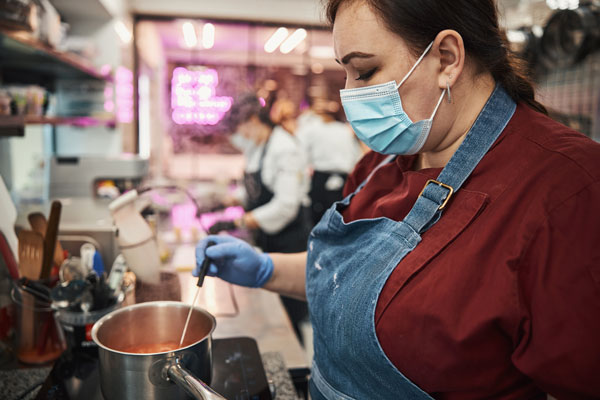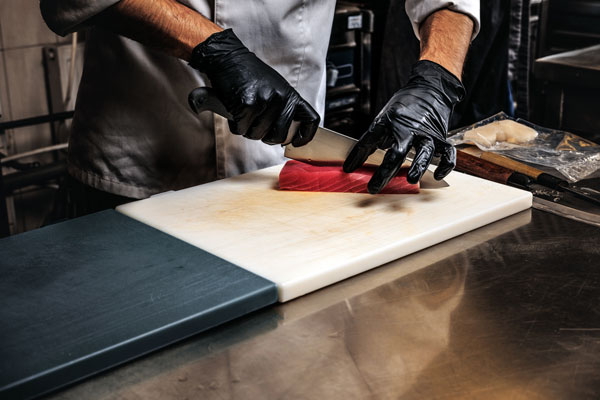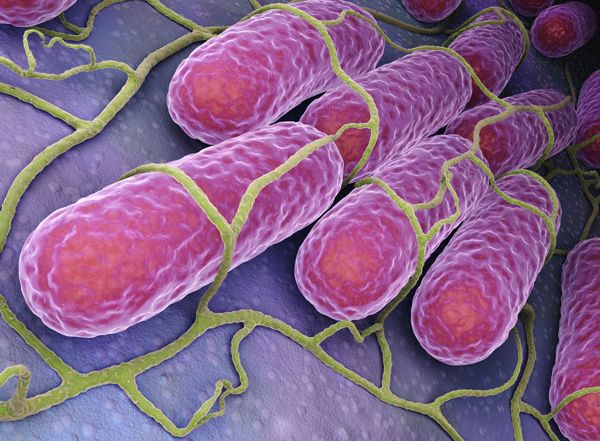UNDERSTANDING TIME AS A CONTROL FOR PUBLIC HEALTH
Much of our business that revolves around food safety is governed by temperatures. The endpoint cooking temperature of ground beef, the hot holding temperature on the line, the temperature of our refrigerators, or what the key temperatures are for cooling – the temperatures that many of us can recite in our sleep. But there are times when temperature control is just simply not possible. I remember several instances in my foodservice life where we didn’t have the luxury of having refrigeration, or where we were catering an outdoor event, and no matter how “windproof” our sternos and chaffing dishes were meant to be, the brisk Iowa wind would blow out the flame. This is where the food code section on time as a public health control comes into play.
Last week, I was helping with the development of a food safety exam, and I was reminded of just how confusing and misunderstood this section of the food code could be – for employees, managers, and seasoned professionals, alike. The code spells out this information in Section 3-501.19.
We all know that hot food must be kept at a temperature greater than 135˚F and cold food less than 41˚F, but at times when you are not able to maintain those temperatures, the code allows you to use time to keep food safe. To use this provision of the code, you do have to have a written procedure that you have prepared in advance, which can be made available to the inspector if they inquire about your procedures.
WE ALL KNOW THAT HOT FOOD MUST BE KEPT AT A TEMPERATURE GREATER THAN 135˚F OR LESS THAN 41˚F, BUT WHEN YOU ARE NOT ABLE TO MAINTAIN THOSE TEMPERATURES, THE CODE ALLOWS YOU TO USE TIME AS A MEASURE TO KEEP FOOD SAFE.
The next requirement is to make sure you have held the food properly at the correct temperature before you remove it from temperature control. In the case of hot food, it should be held at a temperature greater than 135˚F and cold food should have been kept at a temperature less than 41˚F.
Then, once it is removed from temperature control (for example, placed on a buffet line), record the time of when it was removed from temperature control and when it must be discarded. Once the four-hour mark has been reached, the food must have been served or discarded. It cannot be reheated to temperature and saved, or served again, it must be discarded.
There is, however, also a provision in the code that allows you to keep food for up to a maximum of six hours. This is only permissible for cold food (that is, food removed from temperature control at 41˚F or less). Again, the food shall be marked with the time at which it was removed from temperature control and the time at which the six-hour point will be met, at which point the food must be either served, cooked and served, or discarded. However, the food at no point shall exceed 70˚F during this six-hour period. Once the food exceeds the 70˚F point, it must be discarded.
Now for the usual disclaimer that I add at any time I discuss the food code. It is vital that you know your local food code and if the time as a public health control is allowed for in your specific jurisdiction and if there are any specific nuances that differs from the Model Food Code, which is what I base all of my blogs off, currently the 2022 code. Each jurisdiction has the ability to adopt any part of the model code or amend it to fit their standards, so when it doubt, call your inspector. Risk Nothing.
READ MORE POSTS
Food Traceability in Foodservice Operations: An Essential, and Soon-to-be Required, Component of your Food Safety Plan
In June, I discussed the importance of having a solid food defense plan, and I provided you some resources for developing or strengthening your food defense plan. As I was writing those blogs, my mind kept turning toward food traceability. While they are distinctly different concepts, food traceability goes hand-in-hand with a food defense program. I would argue for your food defense plan to be effective, you must have an effective internal food traceability program, where you can trace the product back to the supplier (backward traceability), but also be able to trace the product from the supplier to the guest who was served the product (forward traceability).
Food Defense Plan Resources – at just the right price…
Earlier in the month, I discussed the importance of having a solid food defense plan in place for your foodservice operation. Even if the first version of your plan is not perfect, it is a start. Having plans down on paper will force you to think through the process and ensure the vulnerable points where opportunities exist for possible contamination within the operation are mitigated.
Don’t Turn a Blind Eye to Your Food Defense Practices
Late last week, as I mindlessly scrolled through Twitter, I ran across a Tweet suggesting the #IceCreamChallenge from summer 2019 was the real cause of the Coronavirus spread. Of course, the Tweet was made tongue in cheek, but it did cause me to reflect on that challenge, which had a short life on social media in the summer of 2019.
Salmonella and Listeria monocytogenes: Serious Threats to the Safety of Food
Earlier in the month, I mentioned the top microbial enemies we all face in foodservice operations, E. coli, Campylobacter, Salmonella, and Listeria monocytogenes. While we discussed E. coli and Campylobacter, we did not get around to discussing Salmonella or Listeria monocytogenes.










